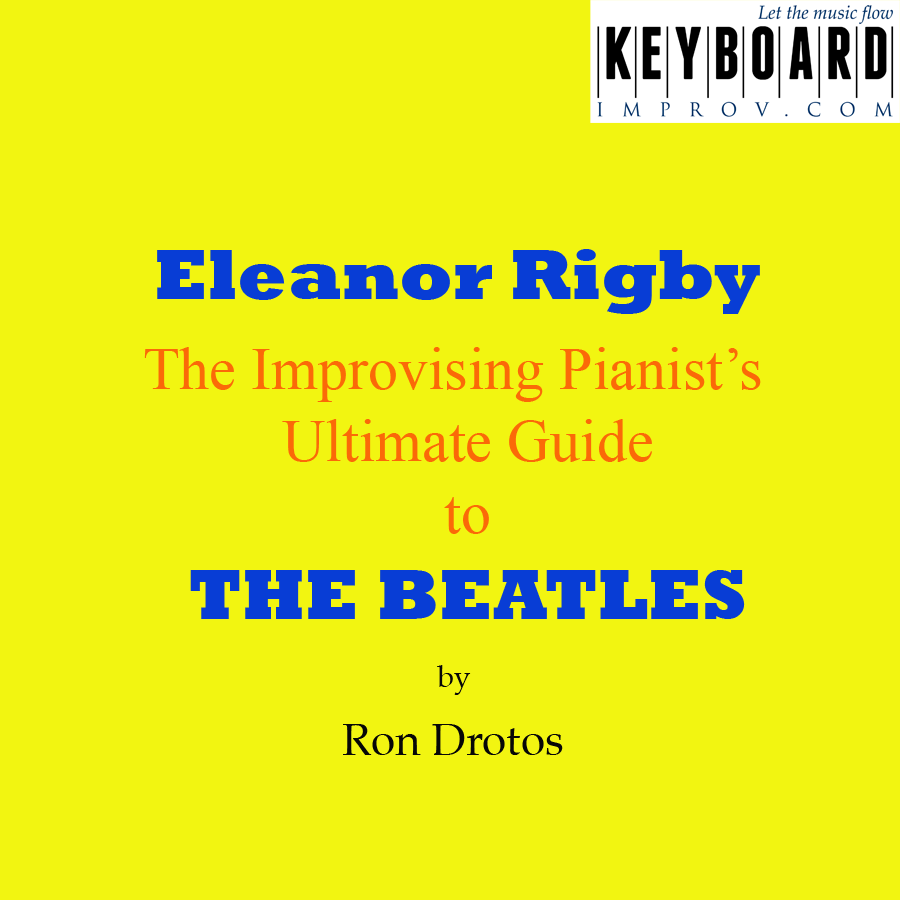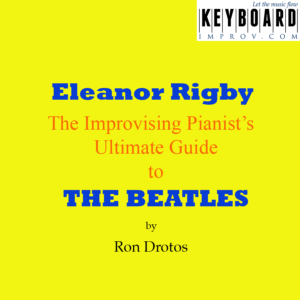A Guide To Help You Have More Fun At Your Piano
by
Ron Drotos
History and overview:
“Eleanor Rigby” is from the Beatles “middle” period, when they were moving away from their early pop styles into a more personal and sometimes introspective way of writing and playing music. The song appeared on their Revolver album, which many musicians consider to the be the greatest rock album in history. Recorded in 1966, it contains elements of pop, classical, and eastern musical influences, all seamlessly interwoven in pure Beatles fashion.
Here are some recommended recordings/videos:
(for international readers who may not have access to these YouTube links, I’ve indicated the original album names wherever possible so you can listen to them on music streaming services, etc.)
The Beatles: Revolver
Paul McCartney: Give My Regards To Broad Street
Aretha Franklin: The Best Of Aretha Franklin
Jacob Collier: Maida Vale session
Musical ideas and piano improv practice tips:
After listening to The Beatles recording of “Eleanor Rigby” for years, I was pleasantly surprised to find how many possibilities it has for piano improv. None of The Beatles play instruments on the recording, since George Martin’s string orchestration provides a full accompaniment for Paul McCartney’s vocal.
Martin’s string arrangement combines a Mozart-like classical style with a staccato quarter-note rhythm that is very pop/rock. In fact, this combination was one of the hallmarks of The Beatles sound on many of their mid-to-late recordings. As pianists, we can begin by adapting the string arrangement to the piano, even by simply playing quarter-note chords with our left hand while our right hand plays the melody on top. (By the way, this Beatle-esque quarter-note approach can bring a fresh approach to orchestral arrangements, too. I used it in an arrangement of the Broadway song “Tomorrow” for the NY Pops to play at Carnegie Hall. It brought a fresh sound to the song and the orchestral musicians enjoyed playing it!)
The form of the song is pure “out-of-the-box” genius, and has further similarities with Mozart. For one thing, the verse features 5-bar phrase lengths, instead of the usual 4-bar long phrases. Mozart used non-standard phrase lengths too, and both he and McCartney manage to make them sound so logical and inevitable that we don’t notice anything out of the ordinary until we sit down at the piano and actually count the number of measures. (If you want to see how extraordinary this actually is, try writing a song with 5-bar phrase lengths!)
McCartney also smoothly navigates the alternation of the E Dorian mode with the E Natural minor scale, which is another “easier said than done” aspect of his composing talent.
Eleanor Rigby: Complete Beatles #10
And here’s how you can get an entire audience involved during your piano performances:
Have fun playing “Eleanor Rigby,” enjoy the journey, and “let the music flow!”
Further links and resources:
Paul McCartney interview on writing Eleanor Rigby
Eleanor Rigby: The Beatles Bible
Includes a very interesting discussion of the song’s original lyrics.
10 ways to improve your piano improv skills
Take a Free Piano Improv Lesson
Flowing Water ebook: Play piano with more joy and less stress!
Improvising The Beatles: A 10-week Skype Intensive for Pianists
Introduction Table of Contents


